News review - June 2018
If an NHS news story is not about funding, it is often about demand and access times, particularly in A&E. While funding and the financial position dominated the news in May, the difficult winter still affected performance against waiting times standards.
In England, NHS performance against A&E targets recovered a little in April, according to NHS England – 88.5% of patients were seen within four hours, compared with 84.6% in March. In April 2017, the figure was 90.5%. Demand continued to rise, with A&E attendances 2% higher in the past 12 months compared with the previous 12 months. Emergency admissions were up 4.1% compared with the preceding 12 months. NHS Providers published an analysis of the winter, saying that between December 2017 and March 2018 more than 5.8 million people attended A&E.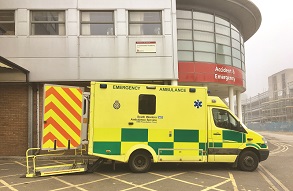
Wales also saw improvements against access time targets, with similar increases in demand for A&E. Diagnostic waiting times improved markedly in March, when the number of people waiting over eight weeks was at its lowest in nine years. The number waiting over eight weeks fell by just under two-thirds over the month.
There were also improvements in referral to treatment and therapy waiting times. The number of patients seen within four hours in A&E increased by 4.4 percentage points in April compared with March. However, this meant that only 80% were seen within the target period, though A&E attendances continue to climb – they were 2.2% higher than the previous year.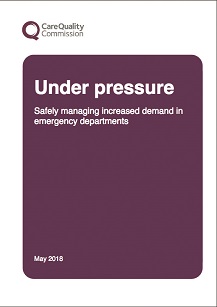
The Care Quality Commission expressed concern about the care offered in emergency departments in England. Its report, Under pressure: safely managing increased demand in emergency departments, said that half of emergency departments in England had an overall rating of requires improvement or inadequate. The CQC added that 8% of services were rated inadequate for safety. It found some examples of good practice and praised staff for the dedication they had shown to patients over last winter. But it raised concerns about delayed ambulance handovers, long waits for first clinical assessment and the use of inappropriate spaces – such as corridors – for patient care.
Research by the Health Foundation said the cost of emergency admission was up £5.5bn over the last decade. It said emergency admissions cost the NHS in England £17bn in 2016/17, compared with £11.5bn in 2006/07. The foundation added that actual costs would be higher, as these figures do not include costs accrued after discharge. Its figures reflect increasing comorbidities in patients. One in three patients admitted as an emergency in 2015/16 had five or more health conditions, such as heart disease, diabetes, hip fracture or dementia. This was up from one in 10 in 2006/07, it said.
However, another study offered hope that the NHS could reduce demand on hospital and GP services. The NHS in England has been testing ways of integrating physical and mental healthcare for people with long-term illnesses, such as diabetes or respiratory problems. One site has shown, from a cohort of these patients, that inpatient admissions fell by three-quarters and A&E attendances by two-thirds. At the same time, demand for GP appointments fell by 73%, adding up to an overall saving of £200,000.
The creation of seamless health and social care services took a step forward with the announcement that three areas have been selected as local health and care record exemplars. NHS England said the areas, which cover 14 million people, would share records between hospitals, GPs and social care. The areas selected are: London, Greater Manchester and Wessex, each made up of one or multiple sustainability and transformation partnerships. Each will receive up to £7.5m over two years to introduce electronic shared local health and care records. NHS England will work with other areas hoping to join the programme.
The Scottish government believes a new law on health and care staffing will not lead to significant additional costs for the NHS. New legislation will require Scotland’s health boards and all other care providers to have appropriate numbers of suitably trained staff in place. The requirement will be enforced regardless of where the care is received. The Health and Care (Staffing) (Scotland) Bill said staffing should be evidence-based, taking account of user needs. A staffing methodology should be used, which will include staffing and professional judgment tools, it added. While this could have an impact on staff numbers, the government does not anticipate an overall increase in costs. In fact, it believes there may be an opportunity to reduce spending by using fewer temporary staff.
Department of Health and Social Care permanent secretary Chris Wormald has said the Department and NHS Improvement will ensure trusts are transparent about the formation of wholly owned subsidiaries. In a letter to Meg Hillier, the Commons Public Accounts Committee chair, he said the Department, NHS Improvement, HM Revenue and Customs and the Treasury would work together to ensure subsidiaries comply with tax law. NHS Improvement’s proposal requiring all NHS trusts and foundation trusts to self-certify the risks and benefits of creating wholly-owned subsidiaries would ensure subsidiaries are not being formed in order to gain VAT advantages, he added.
Reciprocal healthcare arrangements with the European Economic Area (EEA) could cost £290m more than initially planned in 2017/18. In a memorandum to the Commons Health and Social Care Committee, the Department of Health and Social Care said the net outturn is expected to be in the region of £920m – the net budget was £630m, although it has been topped up in-year with an additional £267m. In 2016/17, the outturn amounted to £739m. The Department said the higher than anticipated costs were the result of changes in the rules governing the calculation of average costs (used to work out most of the UK’s bill) and a greater number of travellers from the UK.
Ian Trenholm (pictured) is the new chief executive of the Care Quality Commission. He is currently chief executive of NHS Blood and Transplant and will succeed David Behan, who retires in July. Mr Trenholm was chief operating officer at the Department of Environment, Food and Rural Affairs and chief executive of the Royal Borough of Windsor and Maidenhead.
Month in quotes
‘Hospital staff have been saying for some time that they are admitting higher numbers of much sicker patients and these new findings show they are right. Staff have worked incredibly hard under pressure to provide emergency treatment for rising numbers of older patients with multiple conditions.’
Rising emergency admissions are linked to higher comorbidity levels, says Health Foundation chief executive Jennifer Dixon
‘Anyone with arthritis knows it not only slows you down but darkens your mood, sometimes leading to serious mental ill health. Integrated talking therapy services are a big step forward for our patients and a crucial part of putting mental health at the centre of our plans for the future of the health service in England.’
Claire Murdoch, NHS England director of mental health, explains why integrating physical and mental healthcare is so important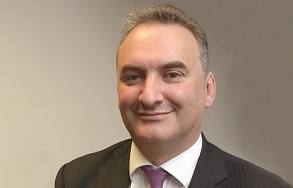
‘NHSl’s proposal to require trusts to self-certify the risks and benefits of creating a subsidiary company will help provide evidence that any new subsidiary companies are not being established to gain VAT advantages.’
Chris Wormald (pictured), Department of Health and Social Care permanent secretary, explains the Department’s stance on wholly owned subsidiaries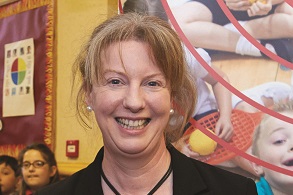
‘There is a clear link between effective, sustainable staffing and high-quality care. NHS staffing has increased to a record high under this government, but it’s vital we have the right staff in the right place, with the right skills, long into the future.’
Scottish health secretary Shona Robison (pictured) on introducing a safer staffing law
From the HFMA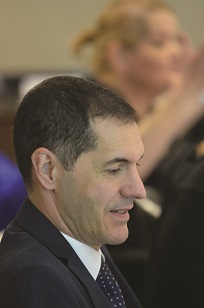
With further details on the long-term funding settlement for the NHS expected in the next month, it is as important as ever to give a voice to the views of NHS finance staff, writes Ian Moston (pictured) in a blog on the HFMA website. The association policy and research committee chair acknowledges that time is tight, so the HFMA’s new-look, shorter NHS financial temperature check aims to ensure finance opinion is heard. He adds that detail will still be covered, despite the shorter survey. As well as examining overall confidence levels, the latest survey also looks at progress on efficiency initiatives such as Getting it right first time, the Model Hospital and NHS RightCare.
HFMA head of policy and research Emma Knowles used a blog in May to encourage members to help shape the association’s work programme. While some projects are already fixed – updates to HFMA introductory guides and the continued expansion of the popular HFMA/NHS Improvement NHS efficiency map – members were asked to prioritise other proposals. One area of study could focus on the savings delivered by new models of care, while another proposes an exploration of what functions might need to transfer to provider bodies or systems as part of moves to integrated care.
In a further blog, NHS Improvement head of improvement analytics Sam Riley argues statistical processes offer more powerful ways of analysing data than the traditional rag ratings. Statistical process control could help identify if a variation is a natural occurrence or an indication of an issue that must be further investigated, she adds.
Related content
We are excited to bring you a fun packed Eastern Branch Conference in 2025 over three days.
This event is for those that will benefit from an overview of costing in the NHS or those new to costing and will cover why we cost and the processes.